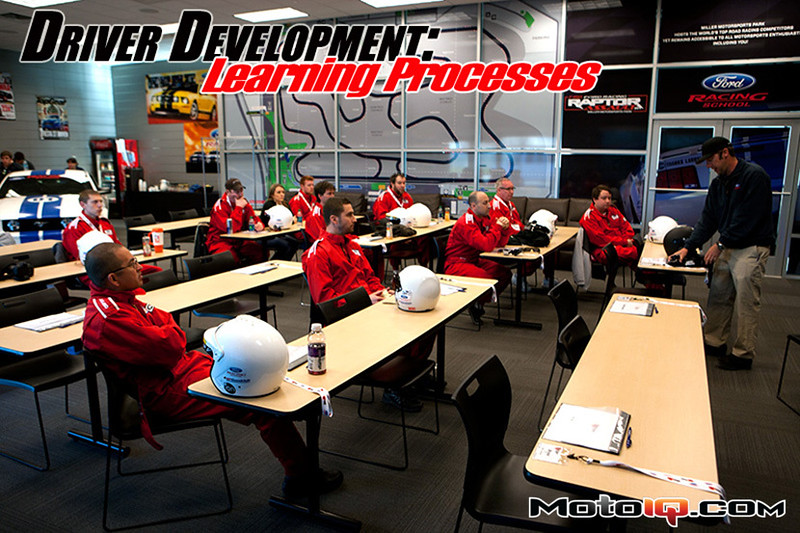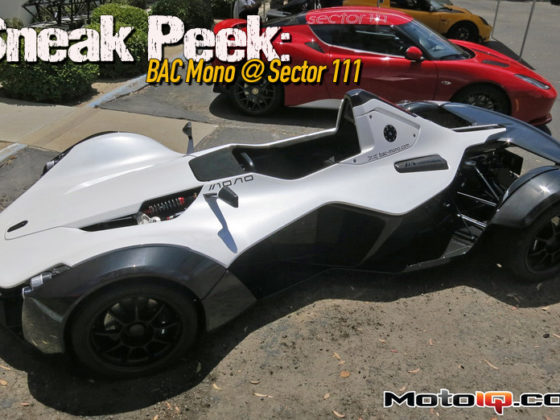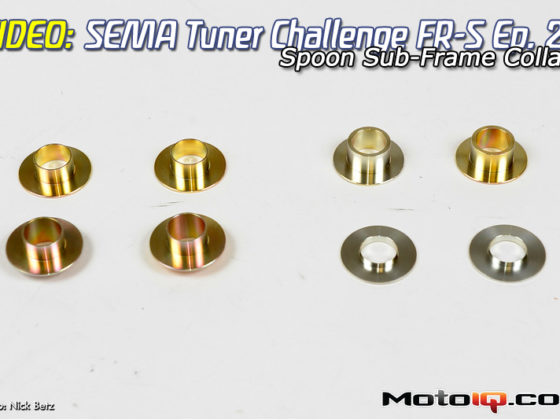 DRIVER DEVELOPMENT: Learning Processes
DRIVER DEVELOPMENT: Learning Processes
How do we become better at driving? Practice makes perfect, right? Well not necessarily. Without feedback and direction, additional practice won’t always improve your ability and can possibly lead to the development of bad habits. So in reality, perfect practice makes perfect. In Part 2 of the Driver Development series, we discuss how drivers learn to improve their craft through various methods from coaching to data analysis to simulators which all aid in the advancement of the skill of driving.
In Part 1 of the Driver Development series, we discussed the importance of car control, and categorized drivers into three different groups based on their experience and ability. Part 2 will be an analysis of the learning process of driver development and we will discuss the different ways people learn to drive in a performance environment. Now buckle up for another long, in-depth article.

During the development of a driver, it is important to know how to get better. If you grew up playing a sport as a kid, there was probably a coach that had organized repetitive drills designed to improve your skill. There was also constant feedback from the coach if you weren’t throwing the ball, catching the ball, kicking the ball, or running correctly. There were also many other players to compare yourself to during every practice or game. Golf coaches for example, analyze and work to improve many aspects ranging from a golfer’s swing, to their chip shot, putting, club selection, and ability to read the course. Without this feedback, the progress of any skill is slower and can often lead to bad habits which might work as a crutch in the short term at a lower skill level, but can become limitations at a higher level.
Driving is no different. Practice and constant feedback (or self-analysis) is crucial in developing the skill of driving. There are a variety of different ways that individuals learn and since every one’s brain works differently, some get more out of certain types of training and analysis than others. For example, I get a lot out of analyzing data and I look at speed traces, throttle positions, brake pressures, etc… for every lap, while my teammate watches every lap of in-car video. While I also look at video and he looks at data, our brains get more out of different forms of information. Moving forward, we will look at Eight main processes: Reading, Riding with an instructor, Driving with an instructor (in the right seat), Instructor watching in a corner, Lead-follow, Video Analysis, Data Analysis, and Simulators.

A common path for up and coming drivers and enthusiasts alike is to take a racing school. Like most sports, racing schools have instructors and curriculums with repetitive drills in which they give constant feedback. They also have classroom discussions and teach the fundamentals of driving on a track and how a car works. They often try to sell you one of their books, which isn’t always a bad thing. This is a great path that incorporates five of our list of eight different learning methods. The first is reading:

1 – READING
Making a car go fast is an extremely complicated interaction between car and driver, and success requires the optimization of the car’s setup, the driver’s inputs, and the relationship between the two. Driving a car fast is all about the ability for a driver to feel and keep the car at its limits at all times. The more you understand what the car is doing and why it’s doing it, the better you can work with the car to make it go fast, both behind the wheel and back in the garage to optimize the car’s setup.
There is far more going in the act of driving than there is when throwing a ball, hitting a ball, riding a bicycle, or navigating the slopes on skis. There is a reason why racing schools have classroom discussions that touch up on the basics of how to drive and how cars work before letting their students loose in the cars. If you look at the best athletes in the world in any field, there is a huge emphasis on the time, effort and now technology that is being spent on optimizing every last detail of the activity in attempts to gain an edge. Because of its complex nature, there is a lot more to be gained by the driver from reading and learning about the technical side of their craft than for athletes in most other sports. The talented but technically inept driver (like Dick Trickle) will often lose out to one with less talent but has optimized his car to give him a competitive advantage.
Knowledge is power. There are a lot of great books out there ranging from those that go over the fundamentals and are easy to read to others that are very technical and require a higher education to be able to follow some of the math. In any case, building your library and always pursuing knowledge behind your craft will give you an advantage over the driver who does not. There are no down sides to reading. However reading is just that, and while greatly beneficial, to get better at driving, you actually need to get behind the wheel and practice. Now on to the driving:




3 comments
What is ur takes on karting to cars? Is practicing karts help racing cars? And what are the skills transferred from karts to cars.
Karting is excellent for racecraft and seat time. However, Karts don’t have suspension, and the dynamics of a car moving around on springs and dampers bring a lot of complexity that Kart’s don’t really help prepare for. Most professional drivers started in Karts and moved into Formula style cars, which is a more natural transition than from say, Karts into sedan racing.
Overall, it’s very helpful (especially racecraft) but not a necessity.
Great article Billy! Your support of motorsports at the amature/hobbiest level is much appreciated. Ive been watching my own videos recently and am picking up things I never realized, mostly a lack of consistency in braking. Understanding that all the aspects of driving the car are interdependant, I am nonetheless trying to prioritize the things that need correction. It seems I would gain more speed focusing on corner exit and thus entry and braking prior to the turn. Am I correct in working backwards? Your thoughts are appreciated and thanks again!